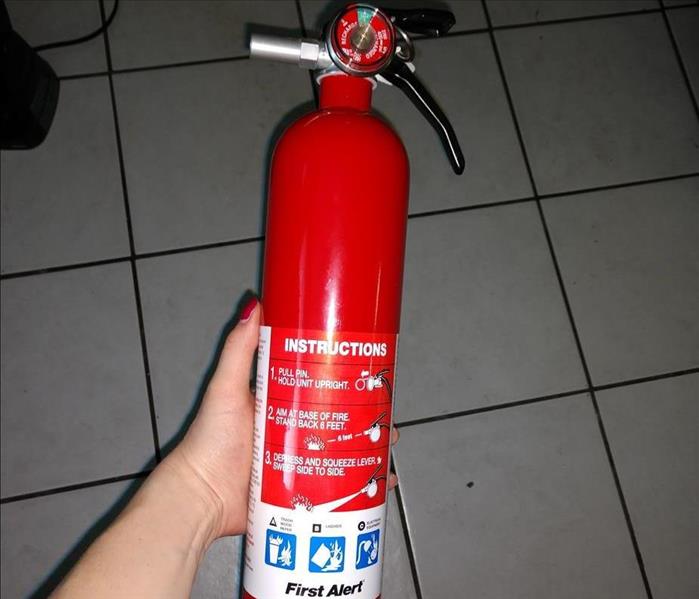Recent General Posts
Be Prepared for Disaster Emergencies!
8/8/2022 (Permalink)
As the summer is coming to an end and we are approaching the Back to School season, it’s important to be prepared for potential emergencies both at home and school. The upcoming month of September is National Preparedness Month, which is sponsored by the Federal Emergency Management Agency (also known as FEMA), and encourages people to prepare for all types of emergencies that may arise. This year’s theme is “A Lasting Legacy: The life you’ve built is worth protecting. Prepare for disasters to create a lasting legacy for you and your family.” (https://www.ready.gov/september#theme)
At Home:
Family emergency planning – what to do, emergency contacts, evacuation plans, etc. Get the whole family involved in both the planning and practicing of emergency drills. Teach older children and teens how to use fire extinguishers and shut off water valves.
Emergency supply kits – food, water, toiletries, first aid kit, flashlights, batteries, matches, cash, etc.
Making your home safer – smoke detectors, carbon monoxide detectors, home fire escape ladders, etc.
Financial preparedness – emergency savings funds, property, health, and life insurances
At School:
Prepare your teachers and students for all types of emergencies or disasters that may occur, including but not limited to fires, floods, tornadoes, and power outages.
Multi-hazard emergency action planning
School emergency operations planning
Establishing an Incident Command System
Fire safety training
Fire and tornado drills
Although the best way to deal with disasters is preventing them from even happening in the first place, not all of them are preventable and we at SERVPRO of Carleton/Maybee are here to help for your fire and water restoration needs. This includes smoke remediation and cleaning and sanitizing after flooding or sewage backups. You can call us at the time of any emergency at (734) 299-7006.
Sign up for our March CE class
2/17/2020 (Permalink)
Join us on Friday, March 20, 2020 as we will host two CE classes for insurance professionals at Salute Special Events in Flat Rock, MI.
Classes are FREE and lunch is provided. Please RSVP to sccSERVPRO@outlook.com.
We will offer the following classes:
BIOHAZARD CLEANUP
10:00AM-12:00PM (2 credit hours)
This course is designed to assist agents and adjusters in understanding the processes that go into cleaning homes and buildings that are or may be contaminated with viruses and bloodborne pathogens, as well as dealing with customers who have recently dealt with a traumatic event that has caused this contamination.
UNDERSTANDING MOLD IN THE RESTORATION INDUSTRY
12:30PM-4:30PM (4 credit hours)
This course is designed to teach and explain the special procedures used by professionals in mitigating mold damage. Attendees will learn remediation processes which can help control the cost if performed in a timely manner.
FOR MORE INFORMATION PLEASE CALL SERVPRO AT 734-299-7006.
Firework Safety in Woodhaven, Michigan
7/3/2018 (Permalink)
 Although beautiful, fireworks can be dangerous. Here are some safety tips to remember this 4th of July.
Although beautiful, fireworks can be dangerous. Here are some safety tips to remember this 4th of July.
July is here, and with it comes barbeques, pool parties, and fireworks! Fireworks are a ton of fun and are beautiful to watch, but it’s important to remember that they are still explosives and should be handled with extreme caution.
On average, 280 people go to the hospital with firework related injuries daily during the month surrounding the 4th of July holiday. In 2017 alone, 37% of firework related injuries affected the arms and hands, 36% were to the face, head, and eyes, while 27% affected the lower half of the body. Over 53% of these reported injuries were burns.
To help keep this from happening to you or someone you love, here’s some firework safety tips from the United States Consumer Product Safety Commission:
https://www.cpsc.gov/Safety-Education/Safety-Education-Centers/Fireworks
- Never allow young children to play with or ignite fireworks.
- Avoid buying fireworks that are packaged in brown paper. This is often a sign that the fireworks were made for professional displays and could pose a danger to consumers.
- Always have an adult supervise firework activities. Parents don’t realize that young children suffer injuries from sparklers. Sparklers burn at temperatures of about 2,000 degrees – hot enough to melt some metals.
- Never place any part of your body directly over a firework when lighting the fuse, and back up to a safe distance immediately after lighting it.
- Never try to re-light or pick up fireworks that have not ignited fully.
- Never point or throw fireworks at another person
- Keep a bucket of water or a garden hose handy in case of a fire or any other mishap.
- Light fireworks one at a time, then move back quickly.
- Never carry fireworks in a pocket or shoot them off in metal or glass containers
- After fireworks complete their burning, douse the spent device with plenty of water from a bucket or hose before discarding it to prevent a trash fire.
Have a safe and Happy 4th of July, from your Friends at SERVPRO of Carleton/Maybee.
Would You Be Prepared?
5/3/2018 (Permalink)
 This Fire Extinguisher demonstrates where the pressure gauge, class, and instructions are located on the unit.
This Fire Extinguisher demonstrates where the pressure gauge, class, and instructions are located on the unit.
If you had a fire in your home within the next 5 minutes, would you know where the nearest fire extinguisher is? Would you know how to use it without having to stumble through reading the instructions on the side? Do you know when the last time was that you inspected your fire extinguisher?
These questions may seem frivolous as you briefly scan over the information in this blog, but if you were put in that situation today, the answers to those questions could mean the difference between complete devastation and minimal soot damage to your home.
Let’s start at the beginning:
Knowing your Fire Extinguisher
There are 4 basic classes of fire extinguishers; each being specific to put out different types of fires.
- Class A are used for fires involving ordinary materials like wood and paper
- Class B are used for highly flammable liquids such as gasoline and grease
- Class C are used for electrical fires
- Class D are used on fires involving flammable metals
Some extinguishers are multipurpose and can be used for multiple classes of fires. Your particular extinguisher should be labeled or have a diagram specifying what Class/Classes it is designed for.
Fire extinguishers should be inspected at least once a month, and should cover 3 things:
- Make sure the nozzle is clear of obstructions
- Ensure that the tamper seal is intact
- Check that the pressure gauge is in the green zone. If the arrow indicator is in the red, the extinguisher will not function properly.
Proper Use of a Fire Extinguisher In Case of an Emergency
Now that you are comfortable with knowing that your extinguisher is still in good working condition and is the proper Class for said fire, here is the easiest way to remember how to properly use it in case of an emergency. Remember the acronym P.A.S.S.
- P. Pull the pin and hold the extinguisher upright
- A. Aim the extinguisher at the base of the fire and stand back
- S. Squeeze the handle
- S. Sweep the nozzle from side to side
For more tips on how to minimize damage and increase your chances of a successful restoration or for any of your other cleaning and restoration needs, call SERVPRO of Carleton/Maybee at (734) 299-7006.





 24/7 Emergency Service
24/7 Emergency Service

